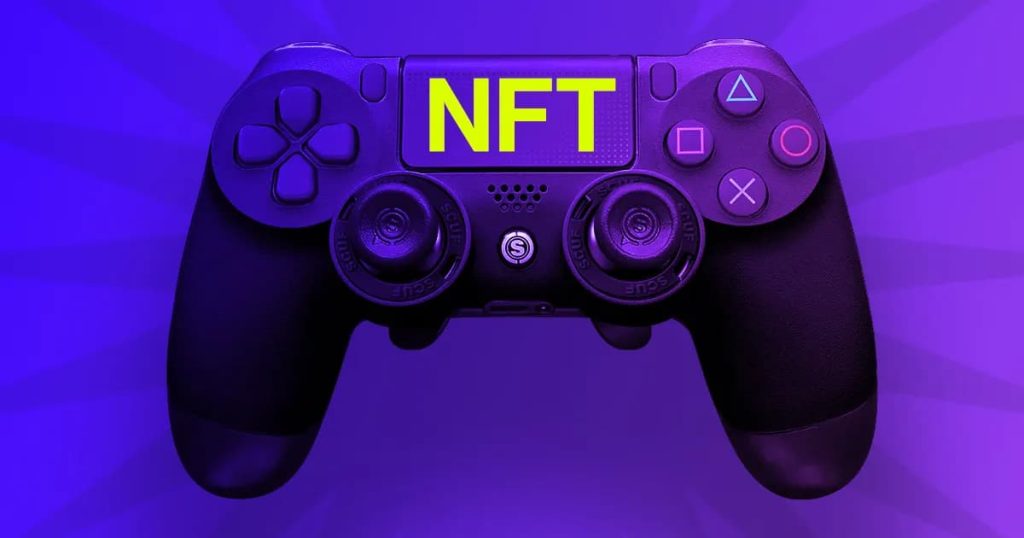NFT Gaming: Its Meaning, Types And Future Scope

Blockchains have progressed beyond the realm of cryptocurrencies after nearly 15 years. Specifically, Ethereum is a very well-known open-source blockchain that permits the execution of “Smart Contracts,” which you may think of as business rules that take automated action when certain criteria are satisfied in the blockchain. Developers started producing various kinds of digital goods by utilizing the capabilities of Smart Contracts.
This essay will concentrate on one specific kind of digital asset: non-fungible tokens (NFTs), and how they improve the global gaming environment.
What Are Non-Fungible Tokens (NFTs)?
In order to clarify what an NFT is, it is useful to discuss the idea of “fungibility.” When one instance of a token is identical to another in terms of identity and value, it is said to be “fungible”. For instance, it makes no difference “which” Bitcoin a person has in terms of legitimacy or worth if they each own one. At the time of writing, one Bitcoin is worth approximately $28,000 USD. The two Bitcoins can be exchanged for one another exactly.
Conversely, when a token is unique and cannot be exchanged for another token with the same identity and value, it is said to be “non-fungible”. The art domain is one of the most popular examples used to illustrate the idea of fungibility; while prints of the Mona Lisa are widely available, the original painting is presently housed in the Louvre.
With the ability to “copy and paste” almost anything, NFTs aim to address the ownership problem in the digital age. NFTs serve as a “certificate of authenticity” for the relevant digital item, even though this is still true. The certificate will only be in the possession of one user at a time.
Why There Is A Need To Use NFTs In Video Games?
A user can often collect a variety of objects from video games. It might be achievement trophies, a lovely skin for a character, or armor pieces in a fighting or adventure game. Anything with distinct qualities in a game, such as the player character, can be represented using NFTs. A video game that uses NFTs to depict objects or other in-game assets is commonly referred to as a “NFT Game.”
When playing an NFT game, users will come into contact with NFTs through interactions with other players, the environment, or game progression—unlike cryptocurrency tokens, which are typically purchased and stored in a wallet. A player who receives an NFT will possess the certified token and a link to a public blockchain that verifies the legitimacy and relationship to the specified asset, regardless of the specifics of the digital asset.
Various Kinds Of NFT Games
Play To Earn
Users of this kind of game receive awards according to how long they have been playing. Play-to-earn games typically aim to keep players interested on a regular basis. Tokens that are fungible and non-fungible may be awarded to users. Item crafting is a common application for NFTs in games with play-to-earn dynamics; players must play until they receive a token in order to make a certain item in order to advance in the game.
Regular (non-fungible) tokens are utilized to reward players who consistently play the game, whereas NFTs are dropped to users randomly due to their unique nature. These kinds of fungible tokens are usually popular in low-income areas, where people play these kinds of games in an effort to increase their income.
In-Game NFT
In-game things like reward boxes, skins, armours, potions, and other commonplace inventory items found in video games are represented by NFTs and fungible tokens.
Typically, in-game tokens are collectible goods that players can exchange for other commodities in online marketplaces or during in-game interactions with NPCs (non-playable characters). A given item’s value is typically decided by its cosmetic appeal or utility inside the game (e.g., a sword with more damage points or armor that makes the user invisible).
As the video game industry and blockchain continue to converge, more recent NFT game development services provide multiple opportunities to find and earn tokens.
Economics Of An NFT Game
Tokens can be obtained or earned in many ways depending on the NFT game. Tokens can then be exchanged or converted to cryptocurrencies on internet exchanges (most of which offer a way to convert them back to fiat currency, such as USD). NFT games give users and game creators more revenue-generating models by utilizing the disruptive economic features of blockchain technology.
Similar to a work of art, an NFT value will specifically depend on how many other users find it appealing. It’s worth might change dramatically over time. This kind of game may also involve financial speculation.
Users may profit or lose money in any economic transaction. An NFT, for instance, can be greatly valued by a certain gaming community. However, that community may deteriorate with time, and the same NFT value may eventually drop to zero (no one cares about it anymore). Similar to stock markets, cryptocurrency exchanges, and other free market environments where supply and demand determine prices, market forces also influence NFT games.
Keep in mind that losing money does not always indicate that customers are being conned, but this is a possibility as well, just like with any new technology that people are not yet familiar with. It is recommended that users look into the identities of the game developers and, if at all feasible, study the relevant token(s) whitepaper. It’s also a good idea to find out if earned tokens are solely exchanged P2P (directly between users using DeFi-like solutions) or on public exchanges. Generally, a token will have more liquidity if it can be sold by a user on a reputable website or exchange.
Typical Errors Made When Managing NFTs
Since NFTs are a type of cryptographic token, users must manage them securely by adhering to best practices and utilizing the appropriate tools, whether it be offline or online.
The less tech-savvy players frequently worry about losing their tokens while attempting to use them to engage with the blockchain (either within or outside of an NFT game), as is the case with any disruptive technology. Users need to be aware that improper handling can result in a token being lost permanently.
Typical mistakes that might result in token loss include:
- Falling for a scam: a dishonest person could trick users into sending tokens to them in exchange for nothing in return. Because blockchain technology is anonymous, it is nearly hard to reverse this kind of circumstance.
- Giving a dangerous Smart Contract permission to access a user’s wallet is the blockchain equivalent of allowing malware or viruses to infect a computer.
- Incompatibility of users’ technologies when transacting with a specific token: there are various blockchain networks that are incompatible with one another. Tokens may be lost if a user tries to transact between incompatible networks.
- Losing the game a user is playing is another typical method of losing an NFT. Certain NFT game rules may result in a user losing tokens that are legitimately earned (for instance, a token may be a consumable in-game item such as a potion or an armor piece that degrades during combat).
The Future Of NFT Games
NFTs present the video gaming industry with an innovative new revenue stream. The gaming experience will expand within and beyond the game universe as more independent and major company developers include NFT and blockchain interactions into their games.
There are intriguing intellectual property issues with non-fungible tokens as well. Even while an NFT can be obtained in-game, once acquired, the item belongs to the user and can be sold for money in a free market, benefiting both the user and the original developers.
There’s little doubt that the video game business will continue to be impacted by blockchain ideas in general. The globe will most certainly witness the dawn of a new age in entertainment and gaming.
Summing Up
Blockchain development technology was developed especially to support the formation of a new kind of currency in the form of cryptographic tokens, or the Bitcoin use case. But after fifteen years of development, a plethora of new applications emerged from the abstract idea of blockchain as a distributed ledger that is append-only. Among the newest are NFTs.
Tokens can be non-fungible (unique) or fungible (indistinguishable, 1 BTC equals another). Because of their singularity, non-fungible tokens, or NFTs, have proven useful in modeling a variety of digital use cases. One such use case is the certification of authenticity of digital in-game assets.
Players of NFT games have the opportunity to earn Non-fungible Tokens through skill or luck. Finding in-game goods and playing a game continually to gain tokens are common game mechanisms to obtain NFTs.
The prices of NFTs are decided by market forces, much like the pricing of any object with an economic value. Additionally, as is typical when money is involved in any way, there are frequent traps that could result in people losing their money. It is recommended that users handle and transact their NFTs in accordance with best practices.
It’s likely that blockchain technology in general and NFTs in particular will keep upsetting the gaming sector. Even though the majority of the possibilities are still in the future, there are compelling signs that the NFT gaming industry is only getting started.



